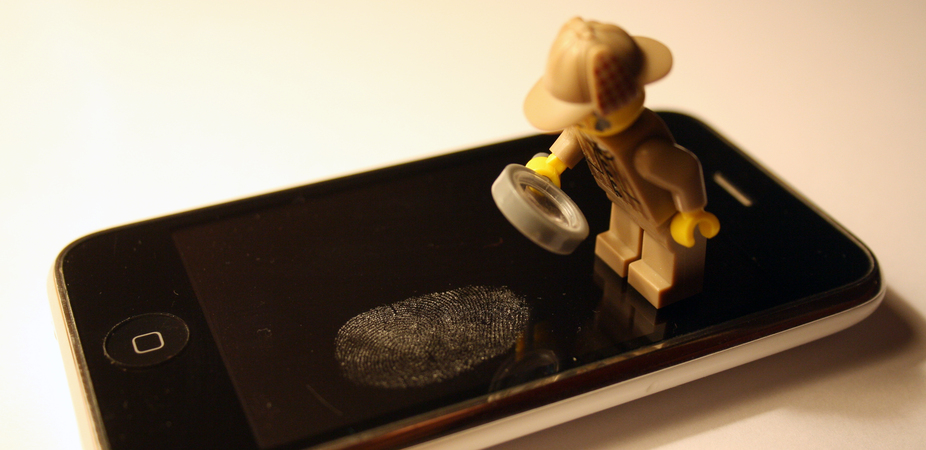
Detection Devices: How a ‘Sensor Society’ Quietly Takes Over (Op-Ed)

This article was originally published at The Conversation. The publication contributed the article to Live Science's Expert Voices: Op-Ed & Insights.
As our cars, phones and computers get “smarter” they – and the companies that provide them – know a lot more about us than they used to.
A large part of this data collection stems from the fact that these devices act as sensors, collecting information we’d probably rather keep to ourselves.
This explosion of sensing devices and the growing embrace of “big data” logic means that we are creating a sensor society: a society which demands that all sensor-derived data is collected, stored and used down the track.
So what are the implications of a world populated by sensors? Let’s have a look at the devices we use today and work from there.
Our devices as sensors
Everyday devices can now be packed with sensors and this has created a number of surprising technological innovations:
- some carpets can predict when a person is likely to fall
- social networks become sensor networks
- mobile phones can be used to identify chemical warfare attacks
- gaming systems become national security warning systems (see video below).
Border patrol meets Xbox at the demilitarised zone between North and South Korea.
Sign up for the Live Science daily newsletter now
Get the world’s most fascinating discoveries delivered straight to your inbox.
But there’s an air of creepiness alongside these technological breakthroughs. Sensors don’t directly watch and listen, but they do detect and record. Our relationship with our devices as sensors is thus a loaded one.
While we interact with our devices, we are largely unaware of the sensors within them, and can be monitored without knowing. Car makers can see when we speed, web browsers track our web activities and smartphone apps can even predict our moods.
So while our devices make our lives more convenient, they also relay information about how we use them. This has caused an explosion of data.
Data, data everywhere
The amount of data we create each day is unprecedented. Some 90% of the world’s stored data was created in the past 10 years, and worldwide we generate about 2.5 quintillion bytes of data daily. That’s equivalent to 250,000 Libraries of Congress. (Facebook alone contributes 500 terabytes each day, or as much data as 50 Libraries of Congress.)

Much of this is generated mechanically and automatically by sensors.
A ballooning effect thus occurs: you have more sensors. Those sensors create more data. That data can be used to develop further sensors. Those sensors create more data.
The only way to make sense of all this data is through automated processes such as data mining, so it becomes very hard for us to anticipate just how sensor data might be used.
Data that we do not even realise is being collected might be used by employers, law enforcement or commercial agencies to make decisions that affect us and we’re now starting to see some very different decision-making taking place predicated on sensor data.
Evolv, a data mining company specialising in recruitment, discovered that people who use web browsers they had to install (such as Chrome) were more likely to perform better and stay longer in jobs than people who used browsers that were pre-installed on their computers (such as Apple’s Safari or Microsoft’s Internet Explorer).
Imagine: if you apply for a job online, you may not just be judged on your job application – you could be judged on the browser you used to upload your application. And the reality is that you probably wouldn’t know how the outcome of your application was determined or what data was used to make it.
This is the promise and problem with “big data” – we have so much of it that we can make new connections that would be otherwise unavailable to the unaided human mind and senses.
We thereby generate knowledge (actionable information) that is “too big to know” in the sense that we can unearth the patterns without being able to explain or understand them.
It’s the infrastructure, stupid!
Making these connections means not only collecting as much data as possible, but storing it just in case it might prove useful sometime in the future. This is a core concept of “big data”.
Harvesting huge amounts of data and putting them to work requires extremely costly and sophisticated network infrastructure: high-speed data networks, mammoth servers and powerful computers.
Tour the Titan: one of the world’s fastest supercomputers.
This infrastructure enables the sensor society by facilitating the reconstruction of the past and predictions of the future. Police in the US have already used cell phone data to place suspects at the scene of a jewellery heist, and even to reconstruct their movements during a subsequent car chase.
So what does all this mean?
The sensor society is not just about issues of privacy and surveillance. Instead, it is about issues of power – the power of technology to sense, monitor and collect data about everything, the power of prediction and the ability to unearth patterns.
These are issues that need serious consideration because it is clear that there is no going back. Sensors and the forms of data mining they enable are now embedded in our lives and will be even more so in the future.
The consequences of living in an increasingly monitored society will be the focus of a conference on the Sensor Society held at UQ during Privacy Awareness Week (May 4-10, 2014).
Mark Andrejevic receives funding from the Australian Research Council.
Mark Burdon does not work for, consult to, own shares in or receive funding from any company or organisation that would benefit from this article, and has no relevant affiliations.
This article was originally published on The Conversation. Read the original article. Follow all of the Expert Voices issues and debates — and become part of the discussion — on Facebook, Twitter and Google +. The views expressed are those of the author and do not necessarily reflect the views of the publisher. This version of the article was originally published on Live Science.










